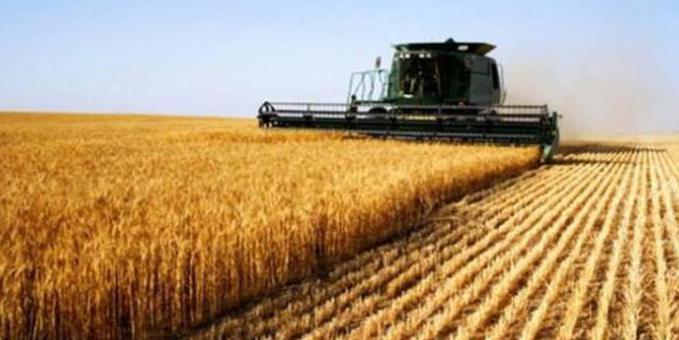Doing something together is much easier than taking all the responsibility alone. There are many forms of cooperation between people, not only in personal matters, but also in business. And one of them is a production cooperative. What is this association, what are its objectives and how does it differ from other business unions?
What it is?
Another, more common name that a production cooperative has is a cooperative. Incidentally, the official name of the association must necessarily include one of these names. A cooperative is a voluntary community aimed at joint activities in production or economy. Its members undertake to pay shares, which will be the main capital of the association. The activities of the cooperative are regulated by the law on production cooperatives. According to him, such a group should include at least five participants. In addition, these participants are required to bear subsidiary liability (that is, if one of the members of the cooperative has arrears on obligatory payments, the rest help him financially by solving this problem).
Creation goals
By the way, why is a production cooperative created? After all, organizations can simply conclude agreements between themselves in order to engage in joint activities, while not acquiring common capital and mutual obligations.

In addition to the fact that this form of association brings a certain profit to its participants, it also performs a number of social functions (this is especially true for partnerships in the field of agriculture, which for the most part are not organizations, but individuals):
- The solidarity of the members of the cooperative is increasing: they understand that with effective teamwork there will be more profit. This helps to overcome social exclusion.
- A personality develops and is brought up through constant interaction with different people.
- Development of tolerance and tolerance - for successful interaction it is necessary to work with representatives of different cultures, religions and so on.
- The creation of jobs is ensured (very often cooperatives create enterprises for their money), which helps to develop infrastructure (to ensure the effective functioning of these new enterprises).
- Social protection of the working population is ensured (the likelihood that a loan will be given to the unemployed is much lower than the receipt of the same loan by a working person. In addition, the possibility of the cooperative itself acting as a lender using equity capital is not ruled out).
Charter
The existence of an association cannot be imagined without a document such as the charter of a production cooperative. It contains information about the association, as well as data on:
- Mutual contributions - their size, payment procedure, liability in case of violation of obligations on these contributions.
- Labor participation in a common cause, as well as liability in violation of obligations on labor participation (that is, being a member of a cooperative without doing anything for the common good, is impossible).
- Profit and loss distribution (of course, access to financial statements in this case is free for all participants).
- Subsidiary liability (and not only to each other, but also on overdue payments of the association itself).
- Governing bodies and how decisions are made in the cooperative.
Internal structure
The activities of a production cooperative are regulated by the General Meeting of its members (if the association has more than fifty members, a special supervisory body is created - the supervisory board). The executive power in the community belongs to the board and chairman of the cooperative, who report on their activities to the general meeting. The way in which decisions are made (collectively or authoritarianly, according to the majority system or in other ways), and the powers of executive authorities are prescribed in the charter.

The general meeting, in turn, performs the following functions:
- Changes the charter.
- If necessary, creates and dismisses the supervisory board.
- Establishes the powers of executive authorities (if this is not transferred to the department of the supervisory board).
- Accepts new members into the association and, if necessary, excludes old ones.
- Makes decisions on the distribution of profits and losses, and also approves financial documentation (including reporting).
- Makes decisions on changing the structure of the cooperative or its complete closure.
The above functions are performed exclusively by the supervisory board or the general meeting, they cannot be transferred to another structural element of the cooperative.
Capital
A production cooperative is a partnership whose capital is based on shares — shares that each member of the association brings into it. At the expense of mutual funds, the cooperative can form an indivisible fund - a separate part of the capital, which will not be divided between the participants either in the existence of the community or after its collapse. Before the existence of a cooperative is legally registered, each participant must contribute at least 10% of his share, and the remaining part he undertakes to pay during the calendar year. Unfortunately, mutual contributions are the main source of financing for the cooperative: by law, it does not have the right to issue shares, thereby attracting external investors.

Separately, it is worth noting that each member of the association can claim its contribution at any time if it has the need to cover debt obligations, and it has already exhausted all other ways.
Profit matters
A production cooperative is such a community where the profit that each of the participants will receive depends on his contribution to the common cause. Of course, you can change this order in the charter of the cooperative, correcting the principles of income distribution. If the association ceases to exist, then its property is divided according to the same principle: whoever invests more will receive more.
Exit from the cooperative
An individual or legal entity, consisting in such an association as a production cooperative, may leave it for the following reasons:
- Own wish. Moreover, now his former contribution or property equivalent to the amount of the unit is returned to the former member. Unfortunately, you cannot immediately return the funds - their member of the cooperative will receive it only at the end of the fiscal year.
- The decision of the general meeting. If a member of the association does not fulfill his obligations, does not obey the charter, or is a member of another cooperative, he may be expelled after a vote by members of the cooperative. At the same time, the share still returns to him.
- Transfer (full or partial) of the share to another member. Only if all members of the association approve such a step, the participant can transfer his share of the property to a person who is not yet part of the community. The right to the primary redemption of this share is still owned by the cooperative.
- Death. Any heirs can replace the deceased relative, if allowed by the charter. If the inheritance of membership is not provided for by the rules of the cooperative, then the heirs will be returned the share of the deceased.
- Dissolution of the cooperative itself. If the general meeting decides that the association ceases to exist, then all members receive their shares back (except for the amounts that were invested in indivisible funds and have already been redirected to finance certain projects). In addition, under the Civil Code, a cooperative may not be liquidated, but simply closed for reorganization, returning, for example, to an economic partnership or society.
Own
The ownership of production cooperatives, as mentioned above, is formed by the units of its participants. It is worth noting that a share can be presented not only in cash, but also in the form of land, buildings, equipment, and so on - all this is stipulated in the charter. It is worth noting that in the process of activities for the money received the association may acquire some property.

But where do you get the money to increase the amount of property? If such a need arises, an agreement is concluded between the members of the association: a production cooperative creates an indivisible fund, the funds from which are separated from the finances of the unit trust. An indivisible fund is spent on the needs of the cooperative, it is inviolable for members of the partnership, while a mutual fund is created by contributions that the shareholder can then demand back. It will also be useful to create a reserve fund - a kind of airbag in case of financial problems (usually this is practiced by agricultural associations that do not have a stable income).
Co-op rights
What are the rights of a production cooperative? Are they different from those of small and medium-sized businesses or monopolistic companies? We can say that the merger of several companies into a de facto one allows them to review the right to use their own resources, the number of which has increased, and with it the possibilities for their application have expanded. In addition, the scope of the right to choose an activity is expanding: in a cooperative, which covers a much larger number of specialties, you can completely change your career. Organizations establishing a production cooperative also exercise the right to joint ownership, disposal and use of property. All this is supported by the Civil Code of the Russian Federation, so that in any case the unlawful use of all these rights will not be.
Evolutionary opportunity
Also, the charter of such associations usually spells out the possibility of changing the form of a production cooperative. Nobody forbids the two cooperatives to create an alliance, thereby expanding the scope of their influence even more. In addition, the association can be reorganized: to create on its basis a business company or business partnership.

The difference between these two forms of organization is that in the first case, individuals and legal entities that have the right to participate in the life of the partnership are combined, and in the second case, capitals, the owners of which usually do not interfere in the affairs of their association, simply financing it.
A responsibility
The fact that the members of the cooperative have subsidiary responsibility before the association has already been said above. But is a production cooperative accountable to its members?
This is actually a very controversial issue. Some experts say that the interpretation of one of the clauses of the Federal Law on Cooperatives gives reason to believe that, if necessary, the community will allocate necessary funds to the shareholder. This can happen if a member does not have the funds to pay his own obligatory payments - then the cooperative can return a share to it, with the help of which the participant will pay off its obligations. On the other hand, the cooperative is not responsible for the debt obligations of its members, so it will not help in the event of financial difficulties.

The next point is the responsibility for the harm that was somehow caused by the members of the association. In this case, the whole cooperative will already be responsible, covering from the indivisible, reserve or share funds of the losses incurred in the process of activity.
The production cooperative is also liable for damage that was caused to its members in connection with their participation in the association. If, for example, during the course of work, harm was caused to health (during work, for example, in hazardous production), property (destruction of some equipment during incorrect use), rights (a member was unreasonably excluded from the association or financial issues remained unresolved) nature), the cooperative is obliged to cover all losses.
Cooperatives in agriculture
Most often, this type of cooperation is found in the form of an agricultural production cooperative. It is safe to say that such a form of organization of cooperation between economic entities working in the field of agriculture is a consequence of the evolution of well-known collective farms. The biggest difference is that previously no share contributions were needed, such associations were financed for the most part at the expense of the state, while the cooperative was forced to survive on its own.

Today this is one of the main problems of production cooperatives. Increasing profitability and productivity, lowering the cost of production is possible only with the modernization, which agricultural associations do not always have the means to do due to the specifics of their business. The active participation of the state in financing production cooperatives is simply necessary for a normal existence.
"Cooperative" problems
But at the same time, many believe that an agricultural production cooperative is an unprofitable type of activity. The main obstacles to their development (by the way, one more popular form of a cooperative - fishing) faces the same difficulties - sales problems (domestic stores prefer imported fruits and vegetables) and high costs of maintaining necessary agricultural equipment (fuel, lubricants). It is worth noting that this problem is close to any organizations working in agriculture, and not just cooperatives. In addition, no one has canceled the competition in the market, which such small communities cannot always resist. The creation of production cooperatives in areas of activity new to this form of organization will probably help overcome these difficulties: supply, maintenance, and so on.
Another problem is the lack of funds, because even shares cannot always provide a lot of capital. External sources of financing are not an option: the lending conditions offered by most commercial banks will put production cooperatives in a very difficult position. A possible solution to this problem is the creation of specialized financial institutions, probably even part of the cooperatives themselves, to participate in their financing.
Conclusion
A production cooperative is a form of association of individuals or legal entities that is very close to the collective farm known to many: the rights remained almost the same, only in this case they are supported by mandatory shares. Most often, this type of partnership is found in agriculture, where it plays a significant role not only in economic, but also in social development. Despite the apparent simplicity of the organization of cooperatives, many questions remain regarding its responsibility to its members, while the subsidiary responsibility of the association's members to it is obvious.It is still difficult to say whether cooperatives will develop in the future or whether they will be replaced by more modern forms of cooperation. For the long-term existence of such associations, financial support from the outside is needed, which they still receive quite rarely.